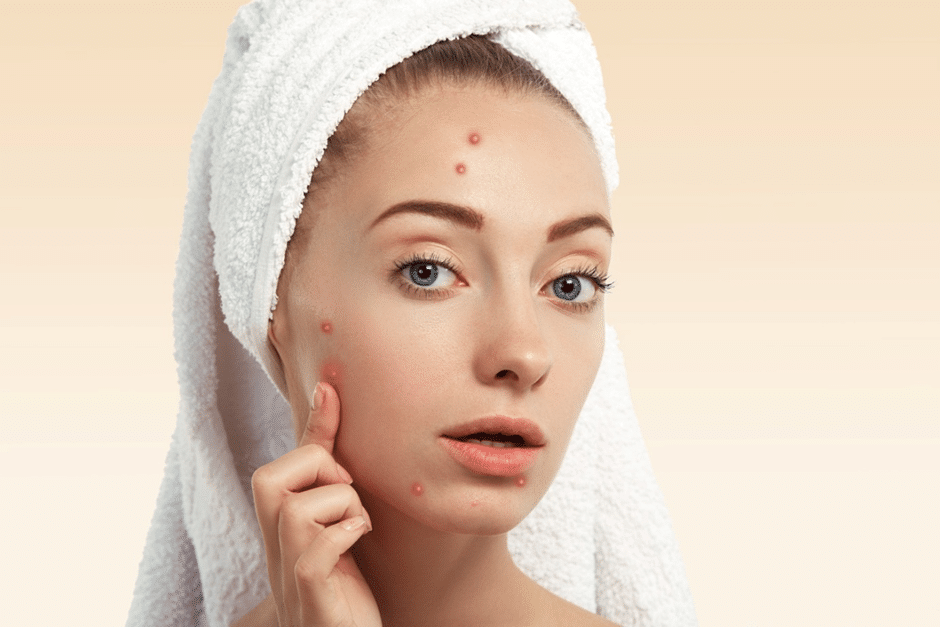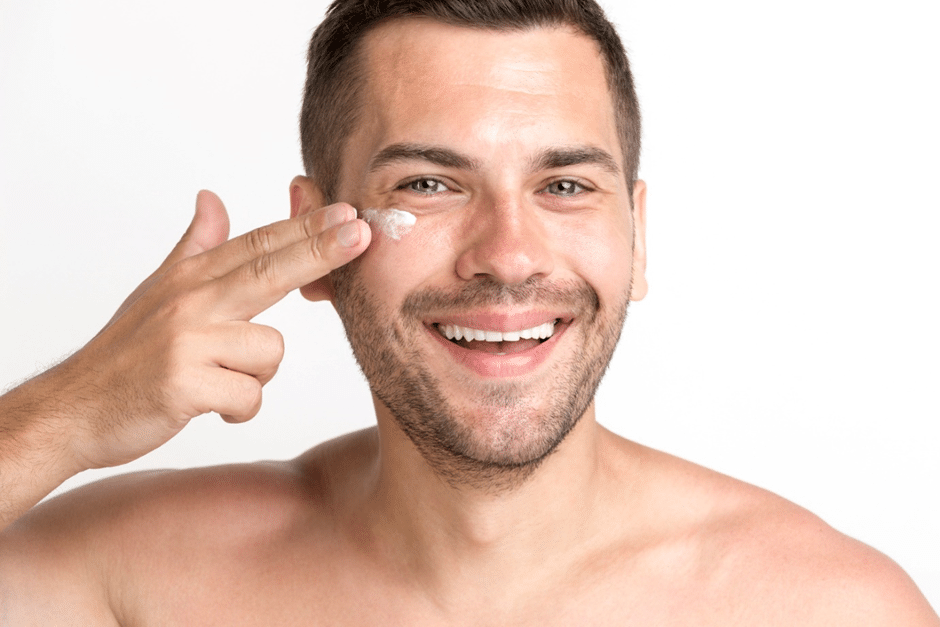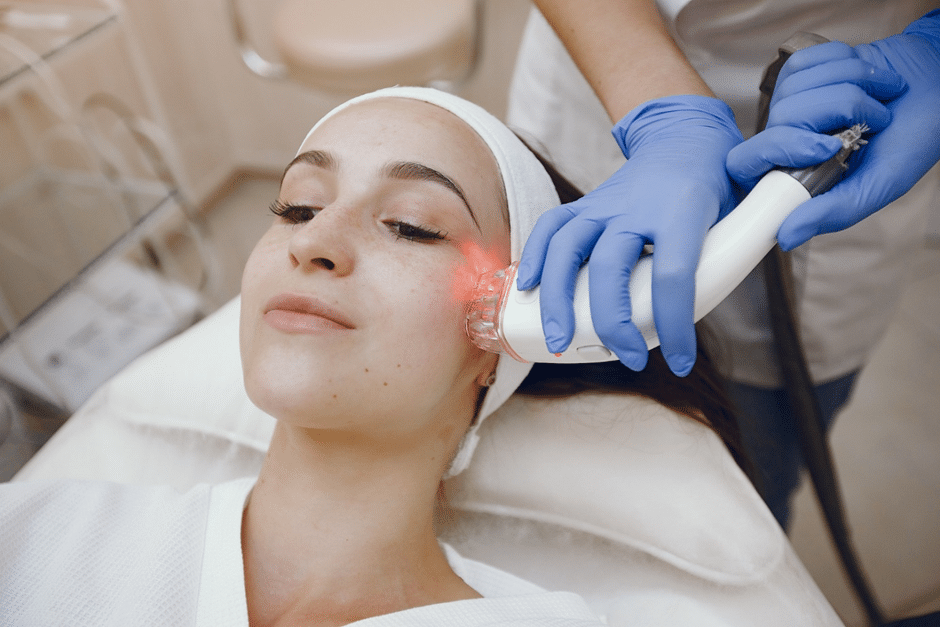
Your Go-To Guide for Acne and Acne Scarring Treatment
Dealing with acne is a frustrating task because it is difficult to manage active breakouts and even tougher to get rid of acne scars.
Acne occurs when the hair follicles on the skin’s surface become clogged with excess oil and dead skin cells. This leads to the formation of different types of acne such as pimples, whiteheads, or cysts. In addition to the stated, hormonal changes, lifestyle, diet, and stress also have an active role to play in triggering acne. Acne scarring, on the other hand, is the skin’s way of healing from the acne. The acne scars may appear as shallow depressions or deep scars. Also, not everyone who has acne experiences acne scarring.
As we all know, our sebaceous glands produce sebum to keep the skin moisturised. This sebum then travels to the surface of the skin through the hair follicles. However, when the follicles are blocked skin bacteria grow inside the skin and inflammation takes place leading to acne. This combination of excess sebum and dead skin cells then becomes a ground for bacteria, which leads to Propionibacterium acne.
There are different forms of acne that occur due to various underlying conditions, each acne type requires a customised acne treatment plan that aligns with the cause, skin type, and severity of the problem.
Types of Acne
The most common types of acne include:
1. Papules:
Papules are sensitive to touch and typically appear as red, smooth-surfaced bumps without a visible center. They develop due to inflammation of whiteheads or blackheads.
2. Pustules:
Pustules are painful and contain pus at their center. They are raised and often take a while to heal completely.
3. Nodules:
Nodules are large, painful bumps that penetrate deep within the skin when pores become severely clogged. If not treated properly, nodules can lead to permanent and severe acne scarring.
4. Cysts:
Cysts are a severe form of acne characterized by large, painful, pus-filled lesions. They can cause significant damage to skin tissues and frequently result in acne scarring.
5. Whiteheads:
When hair follicles become blocked with excess sebum and dead skin cells, they can lead to the formation of small, raised white bumps with a white center, known as whiteheads.
6. Blackheads:
Blackheads resemble whiteheads but have open pores, allowing the trapped sebum and dead skin cells to oxidize, giving them their characteristic dark appearance.
Types of Acne Scars
1. Rolling Scars:
Rolling scars often have a wavy appearance, imparting an uneven texture and look to the skin.
2. Hypertrophic Scars:
Hypertrophic scars result from an excess production of collagen during the healing process. These scars are raised and possess a thick texture.
3. Boxcar Scars:
Resembling chickenpox scars, boxcar scars have well-defined edges and appear as depressions in the skin.
4. Icepick Scars:
Icepick scars resemble small puncture marks, characterized by their narrow and deep appearance.
The treatment for acne scarring depends on the type and severity of the scars. It’s essential to note that relying on natural remedies and tricks is not an effective solution for treating acne scars. Consulting a skincare expert is crucial for addressing acne scarring and acne treatment. Rather than subjecting your skin to numerous unnecessary products, seek professional guidance for effective acne treatment and scar management.
Now that we’ve explored the various types of acne and acne scars, let’s delve into the available options for acne treatment and acne scar treatment in Melbourne.
Acne Treatment Options You Must Know About
1. Over-the-Counter Topical Solutions:
For mild to moderate acne, readily available topical solutions can be effective in management and treatment. These solutions work to balance oil production, reduce inflammation, and unclog pores. Look for ingredients such as salicylic acid, tea tree oil, and benzoyl peroxide when choosing these products.
2. Oral Medication:
Severe acne may require prescription oral medications to support the treatment process. These medications target the underlying causes of acne, control excessive sebum production, and manage inflammation. It’s essential to avoid self-medication and consult a reputable skin specialist at an acne clinic in Melbourne such as Bioscor before taking any oral medication.
3. Chemical Peels:
Chemical peels are versatile treatments that can address various skin issues, including acne. Different types of chemical peels are used for specific skin problems. In general, chemical peels promote increased cell turnover by removing the top layer of dead skin. This process reduces the occurrence of future acne breakouts and aids in the healing of existing acne.
4. Microdermabrasion:
Microdermabrasion is a popular acne treatment suitable for all skin types. It involves the delivery of micro-crystals to the skin’s surface to remove dead skin cells. By clearing away this layer of dead skin, microdermabrasion unclogs pores and reduces the likelihood of acne breakouts.
Now that we’ve covered effective treatment options for acne, let’s explore procedures for treating acne scars.
Acne Scarring Treatment Options
1. Micro-Needling:
Micro-needling is a highly effective procedure for collagen induction and scar reduction. During this treatment, a device equipped with tiny needles is used to stimulate collagen production in the skin. This process can significantly diminish the appearance of scars on the skin’s surface.
2. Laser Therapy:
Laser therapy is a widely employed method for scar reduction due to its ability to deliver visible and long-lasting results. Different types of laser therapies are used to target various scar types. Laser treatments aid in collagen production and skin resurfacing, leading to scar reduction.
3. Radiofrequency (RF) –
Microneedling is one of the latest non-surgical skin rejuvenation treatment that combines microneedling with radiofrequency (RF) energy. It involves the use of a device that uses tiny needles to create small punctures in the skin, which stimulates the body’s natural healing process and promotes the production of collagen and elastin. In addition, the device also delivers radiofrequency energy to the deeper layers of the skin, which further promotes collagen production and skin tightening.Dermal Fillers:
Dermal fillers are particularly beneficial for individuals with acne-prone and hypersensitive skin. These fillers contain active ingredients that penetrate the skin, effectively filling in depressed scars. Seeking professional assistance promptly is crucial for managing and reducing the visibility of acne scars.
Take the first step towards achieving clear skin today with Bioscor! Schedule a consultation with our experienced skin expert and allow us to provide you with effective treatments for both acne and acne scarring.

